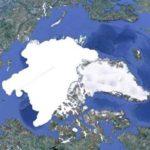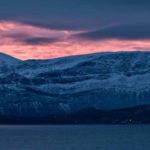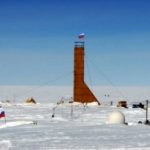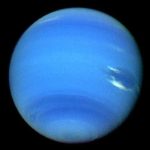17 interesting facts about the North Pole
 Many people cite the North Pole as an example when they want to talk about some very cold or very distant place. This is not far from the truth – it is incredibly difficult to get here, and the temperature conditions here are severe. However, there is no limit to human perseverance, so the North Pole was eventually subdued by brave researchers.
Many people cite the North Pole as an example when they want to talk about some very cold or very distant place. This is not far from the truth – it is incredibly difficult to get here, and the temperature conditions here are severe. However, there is no limit to human perseverance, so the North Pole was eventually subdued by brave researchers.
The geographic North Pole does not coincide with the magnetic. And, strictly speaking, it cannot coincide, because the latter is continuously moving.
The North Pole is much warmer than the South Pole.
Between a quarter and a third of all world oil reserves are supposed to be located right here in the polar regions.
The night here lasts 172 days, and the day – 193 days.
If located at the North Pole, any point relative to it lies in the south.
The North Star, which has served as a guide for sailors for many centuries, is clearly visible from here every night at its zenith.
The area of ice at the North Pole increases in winter and decreases in summer. During the year, the size of the ice cap changes approximately twice.
In the Soviet Union, three dozen drifting polar stations were designed at which researchers studied the North Pole.
The North Pole, like the South Pole, has no longitude, since all meridians converge here.
The pioneer Roald Amundsen, who conquered the South Pole for the first time, also became the man who first reached the North Pole by air. To achieve his goal, he used a specially equipped airship.
On warm summer days, the air above the surface of the ocean in the North Pole sometimes warms up to 0 degrees, but in winter the temperature here usually ranges from -30 to -40 degrees Celsius.
The term “North Pole” itself began to be used by scientists even more than five hundred years ago, in the 15th century.
The first time to reach the North Pole was in 1948.
In the winter of 2007-2008, for the first time in history, an expedition to the North Pole was carried out under polar night conditions. It was carried out by Russian researchers.
The North Pole is 817 kilometers from the nearest settlement, a small village on the Canadian coast.
The depth of the ocean at the North Pole reaches 4261 meters.
The first drift station for its study was built 11 years before people first reached the very pole. Designed by Soviet engineers. The station was located at a distance of 30 km from the North Pole, which then, despite such proximity, was still unattainable.



























